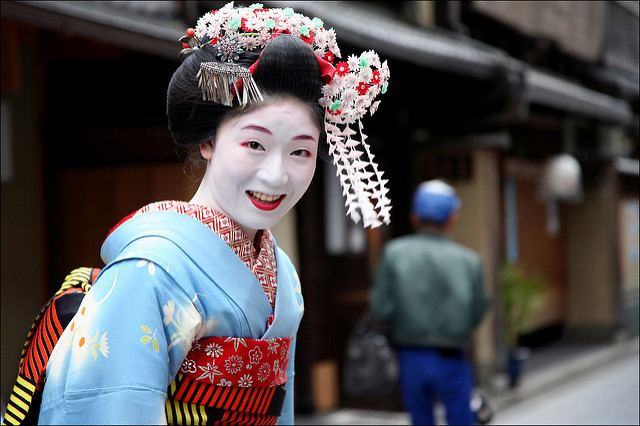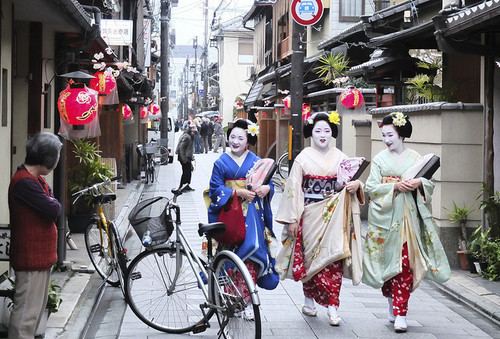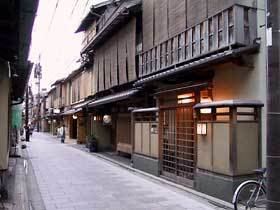 | ||
Miyagawa-chō (宮川町) is one of the hanamachi (花街, "flower towns") or geisha districts in Kyoto. Miya-gawa means "Shrine River", referring to the nickname of the Kamo River just south of Shijō. During the Gion Festival the mikoshi (divine palanquin) of Yasaka Shrine used to be purified here in the waters of the river. Chō means "town", "block", "neighborhood".
Miyagawa-chō has three interconnected rings as its trademark, symbolizing the unity of the shrine/temples, the townspeople, and the teahouses.

What is now Miyagawa-chō was a place where entertainers gathered. Kabuki was performed in many small theaters on the banks of the Kamo River. Some of the teahouses were even boats that operated in the river. As Kabuki was just then developing into a mass entertainment spectacle as known today, the area was very popular and Miyagawa-chō quickly grew into a full town of teahouses. The association with Kabuki has gone, but the Minami-za kabuki theatre of Kyoto still stands on its historical spot on the east bank of the Kamo River. Today, Miyagawa-chō has its own kaburenjō or theater where geisha dances are performed.



